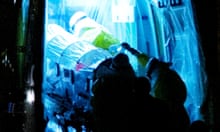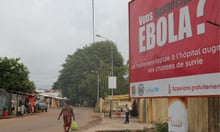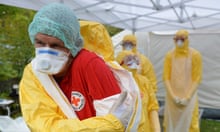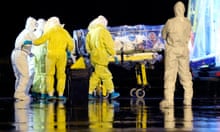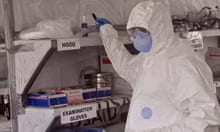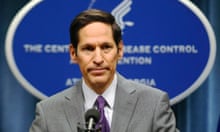What’s the story?
West Africa experienced the biggest outbreak of the Ebola virus ever known, causing thousands of deaths, devastating fragile healthcare systems and damaging the economies of countries, some of which were still recovering from civil war. At the peak of the epidemic, in autumn 2014, infections were doubling every few weeks. The World Health Organisation said there had been 28,457 officially recorded cases by 4 October 2015, almost all in Sierra Leone, Liberia and Guinea, with about 11,312 deaths, but many go unrecorded and the true figure is thought to be two to three times higher. However the forecast by the US Centres for Disease Control (CDC) in September 2014 that if nothing changed there could be 1.4 million cases by late January proved to be unduly pessimistic. For the first time since the outbreak began, there were no new cases officially recorded in the week to 7 October. Serious concerns about the spread of the virus to countries bordering the epidemic region intensified when a child died of Ebola in Mali, having travelled while sick for hundreds of miles by bus, but Mali, just like Nigeria, managed to close down the outbreak. Outside Africa, two nurses were infected while caring for a patient in Texas, who flew from Liberia before exhibiting symptoms, as was a nurse who treated a missionary repatriated to Madrid. In both cases, the patients died but the nurses recovered. A doctor returning to New York from Liberia fell sick and British nurse Pauline Cafferkey, who had volunteered in Sierra Leone, was also diagnosed, but both survived. Cafferkey fell ill again last week and is being treated at the Royal Free Hospital, in London, where she is “critically ill”.
How this happened
From the epidemic’s beginnings in southern Guinea in December 2013, Ebola spread with lethal effect across Guinea, Liberia and Sierra Leone. There were also cases in Nigeria, Senegal and Mali.
Ebola outbreaks in the past have generally been in remote rural areas with swift action to isolate the victims managing to contain them. The WHO was criticised for not reacting fast enough to the latest outbreak: it took three months to diagnose the first cases and five months more before a public health emergency was declared.
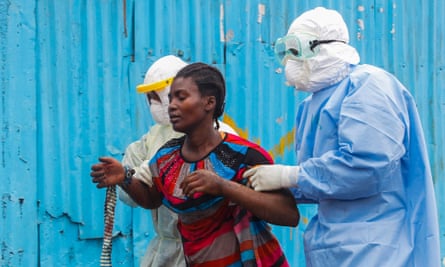
An editorial for the New England Journal of Medicine by Jeremy Farrar, the director of the Wellcome Trust, and Peter Piot, the head of the London School of Hygiene and Tropical Medicine, said the exceptional spread of the disease was probably down to a number of factors including dysfunctional health systems, high population mobility across state borders, densely populated capitals and lack of trust in authorities after years of armed conflict meaning health advice is not heeded. Fear was also a factor. People were afraid to go to hospital because they thought it could be the source of infection.
The issues
How the disease spreads
Ebola is not an airborne disease and can only be spread from human to human through close contact with the bodily fluids of someone who has the disease – in blood, vomit, semen, urine, tears or saliva. The incubation period – the gap between an individual being infected and showing symptoms – is up to 21 days, meaning it is possible for an infected person to travel widely before realising they have the disease. Humans are not infectious until they develop symptoms, which at first are fever, muscle pain, headaches and a sore throat. These are followed by vomiting, diarrhoea, a rash, symptoms of impaired kidney and liver function and in some cases internal and external bleeding.
Death of health workers
The spread of Ebola through bodily fluids puts health workers dealing with such symptoms as vomiting, diarrhoea and bleeding at high risk. By 28 January, 818 health workers had developed the disease across Guinea, Liberia, Sierra Leone and Nigeria, with 488 dead. At the peak of the outbreak there was insufficient protective clothing for health workers. The suits are also uncomfortable to wear in hot climates and risk contamination when they are taken off. An inquiry by Save the Children into Pauline Cafferkey’s infection found it probably happened during the removal of her mask, which was of a different design to those of other volunteers. However, most health workers are infected in clinics treating patients they do not know or suspect have Ebola. The first symptoms can resemble malaria, which is common. Some healthcare workers have stayed away from work for fear of the disease, and in Liberia there have been strikes over pay and conditions.
No drugs or vaccine
Until recently, pharmaceutical firms gave Ebola very low priority. Potential drugs and vaccines under development are now being sped into trials. Healthy volunteers in Europe, the US and unaffected African countries have been injected with candidate vaccines to test their safety.A vaccine has now been shown to be highly effective in Guinea, after being given to contacts of anybody newly infected. Drug trials were set up but the numbers infected dropped so rapidly that there were not enough participants to show an effect. Stocks of ZMapp, the experimental drug used to treat several international aid workers and medical staff, quickly ran out.
Healthcare system collapse
Healthcare in the region was fragile at best before Ebola. It further disintegrated as staff became ill or stayed away for fear of the disease. Infection control and hygiene were major issues. Soap and water were unavailable in some areas. Alcohol hand rubs were needed on a large scale. Isolation facilities are vital to contain Ebola, as are labs for testing because rapid diagnosis is very important. Both were in short supply. In some places, until western governments intervened and treatment centres were set up, isolation was nothing more than an area behind a curtain. People with other diseases and women in childbirth were at risk because hospitals are no longer functioning properly.
Cultural issues
Levels of the virus in infected people are highest in the late stage of the disease and in dead bodies. The disease was often spread during traditional funeral practices that involve washing the corpse. Burial teams in protective clothing were dispatched to homes to collect and safely dispose of bodies. Another route of transmission has been traditional healing practices, which involve touching. Families are at high risk when they nurse their sick at home, as is traditionally the norm.
Persuading people to change their cultural practices has been hard. There is little respect for government authority in a region still emerging from civil war and where corruption is rife. Advice that runs counter to cultural practices is resented and in the absence of authority, myth and superstition take over.
How can I find out more?
The New England Journal of Medicine published a detailed report written by the WHO’s Ebola team to mark nine months since the start of the outbreak. The WHO itself also produced a compilation of articles in August to mark six months since the first case was formally identified. They examine Ebola’s impact on west Africa and warn that without measures to control it, the number of cases will rise fast. Médecins sans Frontières provides information on its treatment centres and regular reports from the frontline. The US Centres for Disease Control has information on diagnosis and treatment, and the World Bank has put together a report on Ebola’s potential economic impact.
